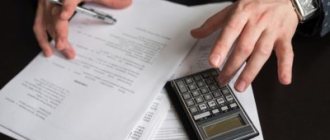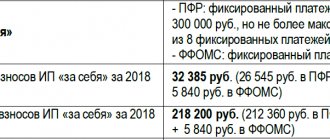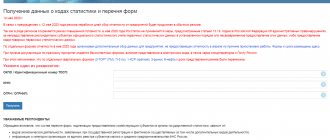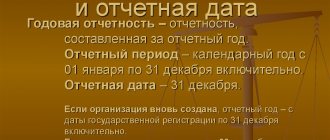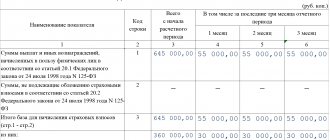Any person who is officially employed at work automatically participates in the formation of their future pension payments. At the moment, the total capital is divided into two components, which are formed by contributions from the employer through tax investments and contributions.
Contributions to the Pension Fund
Contributions of this kind are made to the Pension Fund by all enterprises without exception. Let's explore ways to track and check your accumulated savings.
basic information
All employers are required to make monthly deductions and contributions for Pension Fund employees. In addition to the Pension Fund, funds are transferred to the departments of the Social Insurance Fund and the Federal Compulsory Medical Insurance Fund.
This approach is needed in order to insure the employer and his employee if a case arises in the stock organization that is classified as insurance. In this case, a reverse transfer of funds to the employee will be made.
Let’s say that if an employee gets sick, then the Social Insurance Fund handles sick leave payments, which provides funding for a temporarily disabled citizen. The Pension Fund performs the same function - it pays funds to a citizen who has crossed a certain age threshold.
The Social Insurance Fund provides payments to an employee who is temporarily disabled
It is important to note that the employer makes all contributions exclusively from his own finances; borrowing part of an employee’s salary for these purposes is strictly prohibited. If we talk about pension capital, it is divided into two parts: insurance and savings.
Important point! Since 2014, the entire volume of contributions is formed not by the funded pension part, but by the insurance part.
When is it carried out?
Contributions made to increase the pension capital of each citizen must be made on the 15th of each month. During this time period, the employer makes contributions for the previous month.
Simply put, when the employer makes a contribution on November 15, these funds go towards the full month already worked, that is, October.
The employer makes monthly contributions on the 15th
Important ! It is imperative to find out about the timing of contributions so that in the future the organization’s employees do not have disagreements with representatives of the Pension Fund.
Who pays insurance premiums?
Contributions to the Pension Fund must come from the following categories of persons and organizations:
- Enterprises making contributions according to the rules of any agreements in favor of individuals.
- Individual entrepreneur: for citizens in whose favor payments were made for the performance of labor duties or services under contracts of various kinds and for themselves, inclusive.
- Notaries, lawyers and other categories of citizens working for themselves.
- Individuals, if they make deductions based on any agreements, and in cases where they are not individual entrepreneurs.
Insurance contributions should be made by various enterprises, individual entrepreneurs and citizens working “for themselves”
Where do the silent people's funds go?
Employees of the Pension Fund of the Russian Federation call those citizens who do not exercise their right to choose and are not interested in where the funded share of their labor pension goes as silent. If a person does not enter into an appropriate agreement with a non-governmental organization, all funds remain under the control of the state. It is important to take into account that both the Pension Fund and Non-State Pension Funds cover all material resources with insurance.
Thus, even in the event of bankruptcy or unsuccessful investment, pensioners will be able to receive all the funds that they are entitled to by law. There is no need to worry about this.
Innovations
All savings of pensioners generated at the moment will be invested and issued in full , taking into account investment profits, when citizens are able to retire and apply to the public service for its accrual. Innovations relate to further deductions.
This only implies a redistribution of deposits in favor of the insurance part. When considering the benefits of choosing 0% or 6%, it should be noted that:
- The insurance part of the pension is conservative, guaranteed and supported by the state. The fact is that the funds of this pension share are subject to indexation taking into account inflation and the growth rate of the pension fund’s profits per citizen of retirement age.
- The funded part is more flexible, but its government protection is weaker. The investment profit received as a result of the distribution of the pensioner’s funds to a non-state pension fund or to management organizations is accrued to the savings share. The 6% tariff is of greater interest to insured citizens trying to take part in the formation of their own pension savings.
The funded share has another advantage - it provides for the possibility of transferring funds by inheritance (what happens to the funded part of the pension after the death of a citizen is discussed here).
Insurance premiums are not heritable. Each person chooses the size of the tariff for the formation of a future pension at his own discretion. If a citizen does not want to worry about the fate of his pension savings in the future, he has the right to do nothing.
In this case, all 16% goes to the insurance part; these funds will be managed by the state body. If a pensioner chooses the right to dispose of a low-income pension, he needs to write an application to the Pension Fund or Non-State Pension Fund, which will be entrusted with the savings.
Tariffing 2021
The pension sector quite often undergoes changes, legislative acts change, but the generally accepted tariff for contributions to the Pension Fund remains constant. In 2021, it was equal to 22% of the salary, but only if contributions do not exceed the required limit for the year.
If this level is still higher, then contributions will be equal to 10% of income.
Citizens who make contributions on their own will also pay a fixed amount to the Pension Fund, it is equal to 26% of the minimum wage. In addition, this monetary amount will be multiplied by 12 months.
Important ! It turns out that, knowing the current minimum wage amount of 7,500 rubles, it is easy to calculate that funds in the amount of 23,400 rubles will be deducted during the year.
There is a set percentage that a citizen is obliged to pay to state funds
Calculator for calculating the amount of contributions to the Pension Fund
Enter your salary to find out the amount of contributions to the Pension Fund.
Go to calculations
What does it mean to “freeze the accumulative part”?
Judging by the comments on the forum, many of us believe that freezing the funded portion of a pension means its confiscation. This is wrong.
Since 2002, 6% has been contributed to the funded part of the pension for all officially working pensioners.
Until 2015, these funds formed and increased each citizen’s own pension capital. After 2014, this money goes to the insurance part of the pension.
That is, up to 2014 inclusive, 22% of pension contributions were distributed as follows:
6% – for the basic pension;
10% – for insurance pension;
6% – for funded pension.
And starting from 2015, transfers were distributed as follows:
6% – for the basic pension;
16% - for insurance pension.
Thus, the funded part of the pension was “frozen” as of 2014. There have been no new contributions from employers since then. And the pension system in our country has again turned into a solidarity system.
However, the accumulated pension into which Russians transferred money from 2002 to 2014 has not disappeared. It is the property of the citizen and, by law, will be paid to him after retirement age.
Until 2015, every future or current pensioner with a funded part of their pension was asked to make a choice - to leave this funded part in the Pension Fund or transfer it to a Non-State Pension Fund.
If you leave them in the Pension Fund of the Russian Federation
, then they will be managed by Vnesheconombank (its profitability from 2005 to 2021 is about 6.6% per year).
To find out how much money you have in the funded part of your pension, go to the State Services portal and get. If you are not registered with State Services, then you can find out about the status of your pension account in person at the territorial branch of the Pension Fund or MFC.
The second option is to entrust one of the NPFs
.
After completing the procedure for their licensing and corporatization in 2021, the Central Bank of the Russian Federation has determined a list of 38 organizations that have the right to attract citizens’ savings.
The profitability of each NPF is published on the website of the Central Bank of the Russian Federation, and before transferring money there, it is better to familiarize yourself with this data. The average yield of non-state pension funds is up to 7.2% per year.
When transferring your pension to a non-state pension fund, check exactly where it is registered, whether it has a branch in your city, and how the non-state pension fund will subsequently accrue and pay your pension.
The fact is that the appointment of a pension requires a personal application, for the submission of which you will have to travel, for example, to Moscow.
In addition, you need to understand and remember that the NPF, while earning investment income for you, of course, takes a percentage for its services.
Contributions to OPS
Additional tariffs for contributions to pension capital were developed for employers and employees who are involved in industries with hazardous working conditions. It’s different if they make contributions in favor of citizens entitled to receive preferential pension payments.
The tariff must be selected after assessing working conditions and after the procedure for determining the class of danger and harmfulness.
The amount of contributions may vary depending on working conditions
Income that is not taxed
We must not forget that, unlike tax deductions from personal income, which includes taking into account bonuses, salaries and the employee’s regional coefficient, the amount depending on insurance contributions is not included in wages. In another way, an employee of an organization is given a salary with personal income tax deducted.
If we consider contributions to the Pension Fund, they must be made by the payer taking into account income capital; this amount cannot be deducted from the employee’s salary.
The employee's salary is paid after taxes have been deducted.
How to check if your employer makes contributions
Every citizen has access to information about the size of his funded pension, which costs 6% of contributions. Logically, if this 6% is paid, then 16% for the social pension was also paid. If you know how much is transferred to the Pension Fund from salary to the funded part, then you can easily identify the remaining 16%.
For example, you see that in the past month your savings account was replenished by 1800 rubles, respectively, this is 6%. We need to calculate 16%. Through mathematical calculations we find that 16% is 4800 rubles. How much is paid to the Pension Fund from the salary in this case - 4800+1800, that is, 6600 rubles.
How to get information about the status of your savings account:
- on the State Services portal, subject to registration on it;
- at the territorial branch of the Pension Fund of the Russian Federation, if you have a passport, on a first-come, first-served basis.
If you see that the savings account has not been replenished or has been replenished, but by a smaller amount, you can ask questions to the employer. This action is illegal. To get started, just contact your accountant or management. It is possible that this is just a banal error that will be corrected immediately. Accountants know very well how much interest goes to the Pension Fund, but the human factor is not excluded.
If the employer “takes a stand,” then first of all you need to submit an application to the Pension Fund itself. A trial will follow. You can also immediately apply to the court, since this is a direct violation of your rights. Appeals are accepted within three months after the violation is discovered.
How can you find out the amount of deductions to the Pension Fund from wages?
The amount of contributions depends on the status of the person making the transfer of funds. For organizations carrying out labor duties under the general tax collection regime, the contribution is equal to 22% of income. It is possible to add another 10%, but only if the profit reaches 800,000 rubles or more.
The amount of payments is calculated individually for each employee, taking into account his earnings.
Important ! Enterprises making payments using the simplified method pay 20%. Employers of private companies also apply the same tariffs for their employees.
The amount of deductions depends on the income of the organization and employees
Contributions to the Pension Fund for an employed citizen in 2018-2019
| Payer categories | Percentage for 2021 |
| Payers using the main tariff | 22% + 10% |
| Enterprises and individual entrepreneurs using the simplified tax system (including charitable ones); performing activities in the field of social services, research, education, cultural education and art, sports, healthcare, as well as having a license confirmation for pharmaceutical activities | 0.2 |
| Enterprises that pay wages to ship crews, with the exception of oil tankers | 0 |
| Business entities organized by budgetary and autonomous organizations for scientific activities | 0.08 |
| SEZ residents, organizations and individual entrepreneurs performing tourism and recreational activities | 0.08 |
| Enterprises performing labor duties in the field of information technology | 0.08 |
| Participating in the Skolkovo project | 0.14 |
| Participants of the free economic zone on the territory of Crimea and Sevastopol | 0.06 |
| Having the status of residents of ASEZ | 0.06 |
| Residents of the free port of Vladivostok | 0.06 |
Insurance premiums for individual entrepreneurs in 2018-2019
The plan and volume of contributions to the Pension Fund were previously governed by the provisions of the legislative act of July 24, 2009 No. 212-FZ, but from the beginning of 2021 this responsibility was assumed by the Federal Tax Service, for this reason the plan of settlement operations in order to determine the deductible amount has been changed.
Control over the plan and volume of contributions to the Pension Fund is controlled by the Federal Tax Service
Until 2021, all “private owners,” regardless of the number of employees, were required to make deductions calculated on the basis of 26% of the minimum wage, which is established at the beginning of the financial year according to the following formula: minimum wage × 0.26 × 12.
Important ! From 2021, the amount of the insurance payment is no longer dependent on the minimum wage; it is now a constant value established by the Tax Code of the Russian Federation.
In 2021, the amount of insurance deductions for self-employed persons is 26,545 rubles. For other time periods: in 2021 - 29,354 rubles, in 2021 - 32,448 rubles.
Article 10 of Federal Law No. 167
In addition to the permanent contribution, the payer must, until April 1, 2019, make contributions to the Pension Fund of an additional payment equal to 1% of earnings for 2021, exceeding the amount of 300,000 rubles.
If an entrepreneur received his status not from the beginning, but from the middle of 2021, then half of the income received will be paid to the Fund.
Pensions in different countries of the world
There are two pension systems in the world: funded and joint.
Solidarity system
works on the principle of intergenerational solidarity: the working generation pays for those who have already retired.
A big plus of the solidarity system is that the state can provide an acceptable level of pension to those who would not be able to save for old age on their own, for example, mothers of many children who do not have much work experience.
This system is the main one in many countries, but due to increasing life expectancy and the gradual aging of the population, it is no longer able to cope with the task. There are fewer and fewer people who work and make contributions to the common “pension pot”, and more and more pensioners.
Accumulation system
is the opposite of solidary: in it, the pensioner is not paid by other people, but he saves for his own pension while he works.
During the life of a person or his employer, deductions are made from his salary
, this money is invested and generates income. It is on them that a person lives in retirement.
The good thing about the savings system is that your contributions are yours alone. If they exist, and if there are enough of them. And if not, then that's just your problem.
And remember that with such a system, if your parents have not saved for their retirement, this is also your problem. If your wife gave birth to several children, and because of this, her contributions are not enough for a normal pension, this will also be your problem. And the wife also has parents, and if for some reason they didn’t save for retirement, then guess whose problem it is? Isn't that a lot for one person?
It turns out that the funded system is good for healthy single people without low-income parents. Harsh, but true. The rest benefit from a solidarity system, in which they can at least be protected from excessive load.
In many countries, the pension system is mixed - distribution-savings.
Citizens themselves or their employers make contributions to the country's pension fund, part of this money goes to payments to current pensioners, and the other part goes to their own future pension.
Separate conditions for other categories of payers
For other categories of payers, modified conditions for deductions of contributions to the Pension Fund have been adopted. It becomes possible for them to use a reduced tariff or complete exemption from making contributions.
Important ! Individual payers may be exempt from depositing funds into the Pension Fund if the required conditions are met and documented.
Article 422 of the Tax Code of the Russian Federation establishes cases in which an entrepreneur has the right not to make contributions.
Excerpt from Article 422 of the Tax Code of the Russian Federation
What is investment income?
Investment income from your pension savings is the addition to your employer contributions that pension funds receive by investing your money in bonds, stocks and other assets.
However, it is important to remember (NPFs usually keep silent about this) that when transferring funds from one fund to another, this amount can be lost. The fact is that the income received by your fund is not recorded every year, but once every 5 years.
And if you decide to change the Fund earlier than after 5 years, you may lose the amount earned in the Fund.
You can transfer funds ahead of schedule only if you are categorically not satisfied with the profitability of your NPF and by leaving the funds there you lose more than with the transfer.
In what cases can I pay a reduced rate?
After the time period 2011-2017. and the development of reforms regarding the pension sector for certain categories of payers, contributions to the Pension Fund are made at a reduced rate. These include:
- IT organizations, if the income from core employment is at least 90%, has received accreditation from the state, and the number of employees is at least 7 people;
- organizations and individual entrepreneurs performing work on the simplified tax system in the production and social sectors, the type of employment of which is noted in Article 427 of the Tax Code of the Russian Federation, and the income from the main activity is equal to at least 70%;
- agricultural producers paying the unified agricultural tax;
- tribal communities and organizations of folk and artistic crafts of small peoples of the North;
- payers making money transfers to citizens with disabilities and organizations of disabled people;
- organizations implementing innovative technologies;
- organizations and individual entrepreneurs performing labor duties in free or special economic zones;
- those involved in the invention and implementation of information technologies;
- Russian publishing houses and media;
- organizations that pay wages to the crews of Russian ships, with the exception of oil tankers;
- organizations and individual entrepreneurs engaged in pharmaceutical activities with a licensed work permit;
- organizations carrying out charitable activities, using the simplified tax system and registered according to the required plan.
Excerpt from Article 427 of the Tax Code of the Russian Federation
Details for making contributions
It will not be superfluous to know the details of the Pension Fund of the Russian Federation, according to which mandatory cash contributions will be made. If an employer or private entrepreneur makes a mistake and makes a payment to the wrong account, the process of returning funds will be delayed, time will be wasted, making it difficult to prove the timeliness of payments.
Important ! The process of crediting to the correct account will be significantly more complicated.
In order to prevent such an inconvenient situation, we provide a list of details for making various insurance payments.
| Name of insurance payment | KBK | KBK fines | KBK penalties |
| for compulsory pension insurance (for employees) | 182 1 0210 160 | 182 1 0210 160 | 182 1 0210 160 |
| for compulsory health insurance (for employees) | 182 1 0213 160 | 182 1 0213 160 | 182 1 0213 160 |
| for maternity and sick leave (for employees) | 182 1 0210 160 | 182 1 0210 160 | 182 1 0210 160 |
There are certain details to which insurance payments are credited
In order to group items of the state budget, specialized numeric codes are used, which consist of 20 characters, determined by the Ministry of Finance. Each such code is a source of classified information. The budget classification code is divided into four parts:
- “Administrator” - the first three characters indicate the recipient of the finance (PFR - 392);
- “Type of income” - numbers from 4 to 13 inclusive. This part is in turn divided into 4 parts:
- “Group” - the fourth number indicates income (for payment of insurance contributions - 1);
- “Subgroup” - the fifth and sixth digits (in this option, the combination of numbers 02, 09, 16 is usually used);
- “Article” and “Subarticle” - numbers 7 to 11 inclusive are marked taking into account the relevant settlement documentation;
- “Element” - the last two characters of this part (12 and 13) display the budget level (in a particular case, 06 is usually indicated - the budget of the Pension Fund, but 01 and 08 can also be indicated);
- “Program” - signs 14 to 17 inclusive are needed for the purpose of dividing penalties;
- “Economic classification” - the last three digits (for insurance payments, 160 is usually noted, but in some situations 140 may occur).
About KBK codes
A full list of BCCs operating this year and used to deduct insurance premiums, as well as their detailed description, can be found on the official website of the Federal Tax Service.
Procedure for deduction of contributions
All deductions are calculated by accountants, thus, all payments intended for a working citizen are multiplied according to the insurance rate. This formula is the same for any organization and does not depend on the tax regime.
Accounting for a specified period of time accrues 22% of the employee’s salary to the Pension Fund. If the income reaches 624 thousand rubles, then the tariff is 10%. For example, when an employed citizen earns 20,000 rubles monthly, the accounting department accrues 4,400 rubles.
Important ! For certain organizations, discounts on insurance premium rates have been established. For example, for the information technology sector this figure is 8%. Regarding the earnings of working citizens, the employer makes contributions at a rate increased by 6%.
Tariffs depend on the nature of the organization and the employee’s earnings
Basic ways to check contributions to a pension fund
Before checking the fact of the presence of contributions to the pension fund on the part of the employer, you should find out what amounts, in fact, he is obliged to transfer.
They are not fixed and the same for everyone, since in accordance with federal law, the amount of contributions is 22% of the salary of each employee. It is worth noting that it is not calculated from wages, as is the case when paying the same income tax, that is, the employee does not feel the very fact of the transfers in his wallet and this is not reflected in the pay slips issued to him every month.
An amount of 22% of wages is generally obligatory for transfer for all employees, with a few exceptions. Thus, for employees performing work functions in conditions that are harmful and hazardous to health, an increasing coefficient applies. Depending on the hazard class, the additional tariff can reach 4% of the salary amount.
In turn, there are certain concessions for organizations using a simplified taxation system. They transfer 20% of the salary for each employee.
Reference! Persons who are individual entrepreneurs make transfers independently for themselves according to the tariffs approved by the Pension Fund.
So, having figured out what amounts should be transferred by the employer to the Pension Fund of the Russian Federation, you should begin to check his conscientiousness in relation to the duties assigned to him by law.
There are quite a few ways to check contributions to the Pension Fund, some of them are presented below:
- by contacting the Pension Fund in person;
- through your personal account on the fund’s website;
- on the State Services website;
- through the MFC;
- through banks.
The easiest way to check is through the employer's accounting department. If the employer transfers insurance premiums in full, the necessary information will be provided. However, there is a risk that this information may be unreliable and biased.
Using SNILS and TIN online
SNILS is the main document that confirms the fact of registration of a citizen in the personalized pension accounting system. It also allows you to identify him when contacting the Pension Fund of Russia.
In addition, a green SNILS card is required when applying to any other authorities in order to clarify issues related to deductions of insurance premiums.
A personal account number is also needed for registration in electronic services, including via the Internet: in “State Services” and in your personal account on the website of the Pension Fund itself. After registration has been completed, the SNILS number can be used as a login to gain access to the corresponding services.
If the SNILS number is unknown, for example, due to the loss of a green card, and there is no time to restore the document in the Pension Fund, then you can find it out using a document such as TIN.
This can be done in two ways:
- through the pension fund website;
- via the Federal Tax Service website.
In the second case, you should go to nalog.ru and select the “Business Risks” section. Then a window will appear in which the user will be asked to enter the TIN in the pop-up field. After this, a file will be generated in which SNILS will be reflected.
Attention! There is a high probability that SNILS may lose circulation within the official document flow, since a bill has been approved in parliament, which, among other things, would abolish the issuance of green cards and stop their use.
On the State Services website
To find out about transfers to the pension fund through the State Services website, you should perform the following algorithm of actions:
- Open the “Pensions, benefits, benefits” tab.
- Select from the menu “Notice on the status of the pension account in the Pension Fund of the Russian Federation.”
- Click “Get service”.
Some time after this, a notification about the readiness of the corresponding extract will appear on the portal. Using the information contained in it, you can check the frequency and amount of insurance premiums. In addition, this extract can be used as part of electronic document management to confirm certain information.
To gain access to all the features provided by the site, you must register on it and go through the identity verification procedure. There are several ways to do this, explained in detail on the portal itself.
MFC
This issue can also be clarified through multifunctional centers, which are convenient because they are located in every municipality in the country.
To do this, the citizen must personally arrive at the nearest center and provide its employees with the following documents:
- passport;
- SNILS;
- statement.
Within one week after this, the MFC will provide an extract from the Pension Fund on the status of the personal account.
In banks
All money transferred by employers is stored in the accounts of credit institutions. The Pension Fund of Russia has concluded agreements with several banks, including Sberbank. In order to find out about transfers, a citizen can contact the credit institution directly, having with him a passport and SNILS.
The volume of contributions to the Pension Fund for pension payments by employers
It should be immediately noted that, unlike personal income tax, the calculation of which is influenced by the sum of the salary and bonus parts, the regional coefficient of the worker, insurance payments are not included in the salary. In other words, an employed citizen receives a salary with personal income tax already deducted. However, the employer contributes money to the Pension Fund taking into account the earnings of the working person. These funds are not included in the employee's income. It follows from this that it is not deducted from earnings.
The amount of contributions to the Pension Fund depends on the category of payer. For enterprises under the general tax collection regime (of which the majority are), in 2021 this tariff will be 22%. An additional 10% will be applied to those employed persons whose full income is more than 1,150,000 rubles. In 2020, this parameter will be subject to changes.
Important ! Every year the Government of the Russian Federation approves a resolution that notes this size. The base is established individually for each employed citizen for each month from the moment of contributions for him and increasing total.
The amount of payments may vary from year to year.
Additionally, the adopted tariffication of insurance contributions to the Pension Fund was introduced for employers whose workplaces are located in harmful and dangerous production conditions, in other words, in favor of those citizens who are entitled to preferential pension payments.
Important ! The tariff is set after assessing working conditions and determining the hazard class.
Pension tax for individual entrepreneurs
Today, individual entrepreneurs do not make contributions to the Pension Fund to a personal account, as was previously the case, but pay them to the tax office (FSN). According to Law No. 337-FZ, which was adopted on November 27, 2017, the minimum wage is no longer taken into account to calculate the amount of required contributions. The amount to be paid is set in a fixed amount, which in 2021 is equal to 26,545 rubles.
For annual income exceeding 300 thousand rubles, an additional 1% of the excess amount is charged . The maximum possible amount of tax calculated on an amount in excess of the limit cannot exceed 185,815 rubles. This rule applies to all entrepreneurs, regardless of what taxation system the individual entrepreneur uses and how large the profit he receives.
Self-employed persons
The legislation establishes that self-employed citizens pay a pension contribution in a fixed amount, like other individual entrepreneurs. The tax amount is 26,545 rubles. and is subject to annual review. When earning more than 300 thousand rubles, an additional 1% is charged on the excess amount. Tax payment must be made no later than the last day of the calendar year. If it is a weekend, then the transfer is carried out to the first working day of the next year.
- New rules for summer residents from January 2021
- Means to increase potency in old age
- 8 warning signs of too much blood sugar
Individual entrepreneur with hired employees
If an individual entrepreneur employs hired citizens, in addition to pension contributions for himself, the individual entrepreneur pays tax for each working citizen. The amount set by law is 22% of accrued wages. An important condition is that this amount is not deducted from earnings, but is reflected as a separate expense item for the entrepreneur.
Details for transferring funds (contributions, interest, penalties, fines) have their own BCC number - budget classification code. This is a 20-digit set of numbers, which are divided into groups. Periodically, the Ministry of Finance makes changes, which causes a lot of inconvenience. To obtain accurate and up-to-date information, it is recommended to visit the department’s website.
Transfers to the Pension Fund of the Russian Federation for individual entrepreneurs and self-employed persons
Self-employed citizens (lawyers, heads of the KHL, etc.) pay a constant amount of contributions to the Pension Fund for themselves. In 2021 it is equal to 29,354 rubles. Income over 300,000 rubles is subject to an additional tax of 1% of this amount. In 2021, the constant amount of deductions is 32,448 rubles. This contribution is made until December 31 by all individual entrepreneurs, without exception, and working citizens who have the status of a lawyer, private notary, etc.
Important ! Self-employed persons can make contributions at a special tax rate - 4% or 6% (an experimental innovation in certain regions). The amount of contributions to the Pension Fund depends solely on their own desire.
Self-employed citizens must contribute a certain fixed amount
SNILS check: how to do it?
Contributions to the Pension Fund made on behalf of the employee must be informatively available on his personal account. You need to take into account and remember that a citizen who has decided to use his accumulated part of the pension capital can find out their size by his SNILS number.
Important ! To carry out this procedure, you will need the help of Pension Fund employees; after providing the necessary information, a request is generated.
You can contact the Pension Fund branch to determine the number of payments according to SNILS
Could my pension be transferred somewhere without me?
Theoretically, yes. Every now and then messages appear on social networks that “activists – signature collectors” are walking around the apartments of gullible Russians. They offer to sign some important petition, for example, for canceling the increase in the retirement age, but at the same time they require the signatories to indicate their passport data and SNILS. According to rumors, such data is then used to transfer citizens’ pensions from the Pension Fund to the Non-State Pension Fund without permission.
It is likely that this is fiction, but still be careful! Do not share your personal information with random people, this can cause big problems.
Obtain information on contributions to the Pension Fund using the State Services Internet portal
In order to inform about the insurance portion of their pension, citizens of the Russian Federation have the right to use the State Services Internet portal. In addition, here it is possible to obtain information about the status and funded part of the pension for citizens who are insured by the Pension Fund.
On the website, through your personal account, you need to enter the electronic services section, select the Pension Fund column - the status of the ILS in the OPS system, set the form for receiving notification and obtain information. It will take some time to prepare the report upon request.
Personal account on the State Services website
Important ! This method of providing information is available only to registered users.
Persons obligated to provide insurance contributions to the pension fund
Companies and ordinary citizens can provide funds for OPS. Employers are one of the links in the Russian pension system. They have to fulfill the payment of dues for the employees.
The following have the right to act as employers in the Russian Federation:
- natural person;
- legal entity;
- IP.
A separate category is the self-employed population. These citizens make insurance premiums only for themselves.
The category includes:
- Individual entrepreneur without employees;
- notaries and lawyers;
- other persons conducting private practice.
A citizen can be included in several categories at once. In this situation, he is obliged to make insurance contributions on each basis.
Checking contributions to the Pension Fund using the Pension Fund website
Insured citizens have the right to provide information on their pension contributions and all savings associated with them on the official website of the Pension Fund. Before you start, you need to register through the “citizen’s personal account” tab using the ESIA system. Then, in the “formation of pension rights” tab, you can familiarize yourself with the status of your personal pension capital account.
Personal account on the website of the Russian Pension Fund
Summarize
Reform in the pension sector, which has been ongoing continuously over the last quarter of a century, has created the situation in such a way that the insurance part of pension payments is formed exclusively from contributions made by employers and individual entrepreneurs to the account of the Pension Fund.
The main purpose of pension contributions is to finance the payment of pension funds. The amount of contributions directly determines the size of future pension payments and even the possibility of taking a well-deserved retirement ahead of schedule.
To ensure that the employee has no doubt about the proper observance of his rights to a pension, the employer needs to timely and in full make contributions to the Pension Fund accepted by law.
How can I receive my funded pension?
There are one-time, fixed-term and unlimited methods of payment of the funded part of the pension upon reaching retirement age
.
One-time payment
involves payment in one payment of all funds accumulated in the NPF or Pension Fund.
Urgent –
in equal shares over 10 years.
Indefinite method
involves an additional increase in pension until the end of a person’s life.
The amount of the increase is determined by dividing the volume of the funded part of the pension by 252.
Where does this strange number come from? Current legislation assumes that a person will live another 21 years after retirement. Multiply by 12 (the number of months in a year) and get 252.
But if a person lives longer, then the increase is not canceled and continues to be paid not from the funded part of the pension.


